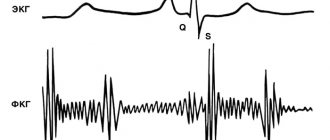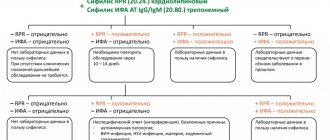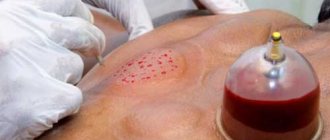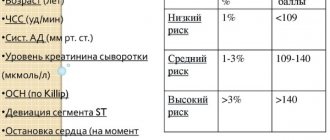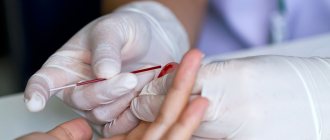© Author: Sazykina Oksana Yuryevna, cardiologist, especially for SosudInfo.ru (about the authors)
To study the endurance of the heart muscle and the fitness of the body, several simple but informative techniques are used. Often these studies are conducted to study the physical performance of healthy adults who play sports professionally or work in fields that require high activity (firefighters, military personnel, etc.).
The essence of the method, the advantages of the step test
The principle of the test is based on the following nuances. Under normal conditions, when a person is engaged in normal daily activities, his heart beats between 60 and 80 beats per minute. At the same time, the volume of blood that is sufficient to supply the organs and skeletal muscles with oxygen is distributed throughout all the vessels of the body. If physical activity increases, then the heart rate also increases. This is necessary in order to increase blood flow to the skeletal muscles, which perform a lot of work during physical activity.
In a well-trained, efficient person with a healthy heart, the heart rate (pulse) increases, but after a certain time it returns to normal values. As a rule, the recovery period ranges from several minutes to half an hour (depending on personal characteristics and training).
Based on this, as well as on knowledge and tables on normal heart rate values, doctors in 1942 developed a formula for measuring an index that allows assessing the fitness of the body. This test was invented at Harvard to evaluate the performance of young men being drafted into the Marine Corps.
Audience for step testing
The main advantages of the physical data research method include the following capabilities:
- establishing the level of initial physical readiness;
- individual assessment of parameters, which helps to optimize further sports load;
- identifying pathological abnormalities in heart function;
- using testing for group research.
Step bench - equipment for research
Since testing does not require special expensive equipment, the research method can be called economical.
How to take an ECG?
This method was developed in 1942 in the Fatigue Laboratory at Harvard University. Using the Harvard step test, recovery processes after dosed muscular work are quantitatively assessed. The step test differs from previously known functional tests both in the nature of the load performed by the test subject and in the form of recording the test results.
1. — the subject stands on the step with one foot;
2. — the subject stands on the step with both feet, taking a strictly vertical position;
3. — the subject puts back on the floor the leg with which he started climbing;
4. — the subject lowers the other leg to the floor.
Step height and ascent time during the Harvard step test [Karpman V.L. et al., 1988]
| Groups of subjects | Step height, cm | Climbing time, min |
| Men (over 18 years old) | 50 | 5 |
| Women (over 18 years old) | 43 | 5 |
| Boys and adolescents (12-18 years old) with a body surface area greater than 1.85 m2 | 50 | 4 |
| Boys and adolescents (12-18 years old) with a body surface area of less than 1.85 m2 | 45 | 4 |
| Girls (12-18 years old) | 40 | 4 |
| Boys and girls 8-11 years old | 35 | 3 |
| Boys and girls under 8 years old | 35 | 2 |
When ascending and descending, the arms perform normal walking movements. During the test, you can change the leg with which you start lifting several times. To strictly measure the frequency of ascents to and from steps, a metronome is used, the frequency of which is set to 120 beats/min. In this case, each movement will correspond to one beat of the metronome.
Before taking the Harvard Step Test, you must first demonstrate the test to the test taker and then give him the opportunity to try it. If the subject is unable to climb a step within 5 minutes, then the time during which the muscular work was performed is recorded. To do this, you must have a stopwatch when conducting the test. The test may be terminated if the subject, as a result of fatigue, begins to lag behind the specified climbing rhythm for 20 seconds.
Mistakes that are usually made when performing the Harvard step test:
- failure to maintain the correct rhythm;
- incomplete straightening of the knee joints on the step;
- incomplete straightening of the body on the step;
- placing your foot on the floor on your toes.
The subject must be informed in advance about possible errors when performing this exercise.
The Harvard step test made an attempt to strictly dose physical activity. However, this dosage is to a certain extent arbitrary, since the power of physical activity cannot be determined accurately.
A certain advantage of the Harvard step test is that, although the time for its completion is fixed, if the subject stops working before the specified time, then his performance, despite this, can be assessed. Thus, the influence of the subject’s subjective attitude towards the testing procedure is reduced.
IGST = T(100/(f2 f3 f4) • 2,
where T is the actual time of performing physical activity in seconds; f2, f3, f4 — sum of heart rate for the first 30 seconds of each (starting from the 2nd) minute of the recovery period.
The value 100 is necessary to express the IGST in whole numbers, and the number 2 is necessary to convert the sum of the heart rate over 30-second periods of time into the number of heartbeats per minute.
When determining IGST, heart rate for the 1st minute of the recovery period is not taken into account. This has its positive and negative sides. The positive side is that in the early recovery period, heart rate depends on a large number of factors, some of which are not related to muscular work (for example, the transition from a vertical position while climbing a step to a sitting position).
Evaluation of test results. The IGST value characterizes the speed of recovery processes after strenuous physical activity and is assessed on a scale. The faster the heart rate is restored after the step test, the lower the value of f2 f3 f4 and, therefore, the higher the IGST.
IGST = T*100/ f2* 5.5.
The Harvard Step Test is a fairly significant stress test. According to average data, heart rate at the 5th minute of climbing a step reaches 175 beats/min. In this case, complete restoration of heart rate occurs no earlier than after 20 minutes of the recovery period. Oxygen consumption during the test is on average 3.5 l, pulmonary ventilation reaches 75 l/min.
In addition to the considered methodology, there are step tests that take into account (for standardization) the anatomical features of the subject: length of the lower leg, body weight, rate of ascent and other parameters. This allows you to more accurately select the load for the subject to the level of its submaximal values.
The main disadvantage of the Harvard step test is the low accuracy in dosing the load and the predominantly qualitative analysis of indicators recorded before and after the end of physical activity - in the recovery period. All this leads to the fact that during repeated examinations or when comparing the results obtained, significant errors in the quantitative assessment of data are observed.
Evaluation of the results of the Harvard step test [Karpman V. L. et al., 1988]
| IGST, units | Physical performance assessment |
| Less than 55 | Badly |
| 55-64 | Below the average |
| 65-79 | Average |
| 80-89 | Fine |
| 90 and more | Great |
Benefits of the study
The advantages of the Harvard step test include the following features:
- Does not require the use of special equipment, as when conducting other tests with physical activity,
- Can be carried out during large-scale studies,
- Gives a fairly accurate assessment of a person’s overall endurance, which is an important factor when starting sports training,
- Based on the previous paragraph, it allows the coach or instructor to create an individual training program in the gym.
Indications
The Harvard Step Test is more often recommended for athletes. In addition, it can be performed when starting training in fitness centers to determine a load program or when applying for a job that requires a sufficient level of physical fitness.
The Harvard Step Test is used for the following purposes:
- assessment of the athlete's preparedness;
- assessment of physical condition when an athlete returns to sports after a long break;
- selection of athletes for competitions;
- development of an individual training program;
- assessment of the effectiveness of physical activity;
- professional examination of emergency workers or military personnel.
When is a step test necessary?
Typically, the Harvard Step Test is used to assess the fitness of athletes. In particular, to assess the physical strength of people involved in cross-country skiing, marathon walking, running, and athletics.
In addition to professional athletes, a step test can be used to assess the performance of individuals starting training in fitness centers or gyms. Also, using the step test, contraindications from the heart are identified if a person cannot withstand the load used in the test.
For physically developed people who have been training in the gym for a long time, with the help of an instructor, programs can be developed depending on how better the person has become to tolerate physical activity.
A modification of the step test is used by workers of the gas and smoke protection service (GDSS), as well as by firefighters, to assess their physical endurance in extremely unfavorable conditions. But more often in this group of people, PWC170 is used - a test that allows you to assess the fitness of the heart and body, taking into account certain quantitative indicators. The name of this test comes from the first letters of the term “physical working capacity” translated from English (physical working capacity), and the number 170 means the number of heartbeats, which is optimal for the functioning of the cardiorespiratory system under load, and this heart rate is achieved through a two-level load ( climbing steps of different heights).
Who should go
Since the pace of execution is quite intense, the test is performed only on healthy people. The second condition is sufficient physical preparation, since if the subject has not previously engaged in physical education, then he will not be able to achieve the recommended duration of the load.
The Harvard Step Test is used for the following purposes:
- determination of the athlete’s initial training,
- drawing up an individual training program,
- if the athlete returns to training after a break,
- when selecting for competitions,
- assessment of the effectiveness of physical activity,
- when undergoing a professional examination by specialists from the Ministry of Emergency Situations.
The age of the subjects can be from 8 years, girls and boys are allowed to participate, there is no upper age limit.
Preparing for the test
No special preparation is required before the Harvard Step Test. Despite the fact that the people to be studied are healthy and are not known to take any medications, they should still be warned that the day before the test they should not take drugs that affect the heart.
On the morning of the test, the patient can have a light breakfast of low-fat and light foods; there is no need to overeat.
You should come to the procedure in comfortable clothes that do not restrict movement, and sports shoes.
Defining flexibility
This athletic quality is needed in many disciplines, even those that primarily require speed and agility, such as soccer. This sport is the most dangerous. Most often, football players suffer from legs: bones, joints and ligaments. Much of this damage could be avoided by developing flexibility.
A popular spinal flexibility test is “Reach to the Floor.” You need to stand up straight, bend over and touch the floor with your hands. It is useful to concentrate on the sensations in your body at this time. Discomfort indicates that your flexibility is poorly developed, and pain is a reason to consult a doctor.
We check the mobility of the shoulder joints. Stand up straight, then raise your right arm and throw it behind your back. Then lower your left hand, put it behind your back and try to reach your right hand.
We determine the condition of the thigh muscles. You need to lie on your back on a bench or separate bed. First, lie down on the right side, pull your left knee toward your chest, and support it with your hands. Lower your right leg and try to rest it on the floor. Then repeat this exercise with the other leg.
Let's test the elasticity of the ligaments in the groin area. You need to sit up straight, feet on the floor. Then spread your knees to the side and bring your feet together. Then pull them towards your groin as close as possible. Remember how much space is left between your feet and your groin.
results
Test Score
Good Average Poor
“Reach to the floor” Palms on the floor Fingers touching the floor From fingers to floor > 10 cm
Shoulder joints Fingers connected Distance between fingers up to 5 cm Distance between fingers > 5 cm
Thigh muscles Heel almost reaches the floor Heel is much lower than the level of the bench Heel is at the level of the bench
Groin ligaments From groin to heels 5-10 cm From groin to heels 10-20 cm From groin to heels > 20 cm
Test results
If you have good flexibility, this does not mean that you need to calm down and rest on your laurels. It is necessary to constantly train so as not to lose fitness
If the results are average or worse, you need to pay attention to your health. Pain in the spine or joints may be a sign of scoliosis or arthrosis
Therefore, before going to the gym, it is useful to consult a doctor, conduct more than one step test and determine your level of flexibility.
How is the research conducted?
The Harvard Step Test is performed as follows. Equipment required is a stopwatch, a special step bench with a height of no more than 50 cm for men and 40 cm for women, and a metronome that counts beats at a rhythm of 120 per minute. If there is no metronome, the person conducting the test can count at such a frequency that each “one-two” count occurs for one second, and “three-four” also for one second. On the count of “one” the subject puts one foot on the bench, on the count of “two” - the second foot on the bench, on the count of “three” he places the first foot on the floor, on the count of “four” - the second foot on the floor. Thus, in the first second the subject stands with both feet on the bench, and in the second second with both feet on the floor. Thanks to this pace, the required frequency of ascents on the bench is achieved - 30 per minute, and the duration of ascents is 5 minutes. In this case, you should place your feet on the bench and on the floor not on your toes, but on your entire foot, and keep your body fully straight while standing on the bench. Hand movements are not limited and can be the same as during normal walking.
After thirty ascents, the subject is asked to assume a comfortable sitting position and allowed to rest for one minute. The recovery period begins. From the beginning of the second minute, begin counting the pulse for 30 seconds, then from the beginning of the third minute, counting the pulse for 30 seconds, and from the beginning of the fourth minute, counting the pulse for 30 seconds. That is, three pulse values are obtained: 2 min – 2 min 30 sec; 3 min – 3 min 30 sec; 4 min – 4 min 30 sec. After recording these data, the Harvard Step Test Index (HST) is calculated, based on which a conclusion is made about the physical performance of the subject.
Errors in results
The results of the study can be distorted by the incorrect behavior of the person being tested, that is, by his unclear execution of the trainer’s instructions. Frequent violations include non-compliance with rhythm (accelerating or slowing down steps relative to the metronome), stooping (the back should be in a clearly vertical state), placing the foot on the toe rather than on the full foot, and legs not straightened at the knee joints.
To avoid mistakes, the person taking the step test should be given detailed instructions before training. Harvard testing is a simple, accessible and informative method. Once you know your endurance level, you can balance your physical activity to improve your athletic performance while maintaining a healthy heart.
Calculation of the Harvard Step Test Index and interpretation of results
The step test index (IGST) is calculated in order to determine how quickly an athlete recovers after physical activity, because this determines his endurance and the degree of load that he can endure without harm to health. In other words, a person’s endurance is determined by how quickly his heart rate returns to normal values, and, therefore, how quickly the heart recovers after exercise.
IGST is assessed using one of two formulas. The latter is simplified and can be used in the case of mass research.
a) IGST = t x 100 / (1 + f2 + f3) x 2
t is the time it takes to climb onto the step bench,
f1, f2, f3 – values obtained by measuring pulse starting from the second minute of the recovery period.
b) IGST = t x 100/f x 5.5
t – load time in seconds,
f – pulse value.
The obtained values are estimated based on special tables:
| Harvard Step Test Index | |||
| Result | Persons not involved in sports | Persons involved in cyclic sports (rowing, running, racing, skiing, swimming) | Persons involved in acyclic sports (volleyball, hockey, football, tennis, badminton, etc.) |
| Bad | Less than 56 | Less than 71 | Less than 61 |
| Below the average | 56-65 | 71-80 | 61-70 |
| Average | 66-70 | 81-90 | 71-80 |
| Above average | 71-80 | 91-100 | 81-90 |
| Good | 81-90 | 101-110 | 91-100 |
| Great | More than 90 | More than 110 | More than 100 |
Based on the results obtained, the degree of training of a particular athlete can be assessed. Although fitness levels vary from one athlete to another, a test taken at different times on the same person can provide an estimate of how well an athlete has achieved in training over a given period of time.
How to calculate the index
The endurance rating is determined by the index. It reflects how quickly the heart restores its normal rhythm after exercise. The shorter this time, the better the index, and therefore the fitness level. Calculation method:
- Add up all 3 heart rate measurements obtained.
- Divide 100 by the resulting amount.
- The result of the 2nd action is multiplied by 2, and then by the time that was sustained by the subject (5 minutes - maximum).
For screening tests or the need for a quick sample, pulse rate can be measured once.
In this case, one result is taken for calculation, and instead of the coefficient “2” the number is multiplied by 5.5. The remaining stages remain unchanged.
Watch the video about the Harvard Step Test Index:
Causes of hypertrophic subaortic stenosis
The more a person subjects himself to physical activity, the more the left ventricle increases in size, in addition, the septum and mitral valve leaflet move away from each other, thereby exacerbating the obstruction. These processes often lead to secondary ventricular hypertrophy. The free walls of the ventricle remain of normal size.
Dangerous complications of subaortic stenosis are the following conditions:
- arrhythmias of various types;
- congestive heart failure;
- atrial fibrillation;
- mural thrombi in the atria;
- development of infective endocarditis.
These include:
- genetic predisposition;
- long-term high blood pressure;
- damage to heart tissue during a heart attack;
- chronically rapid heartbeat;
- heart valve diseases;
- metabolic disorders such as obesity, thyroid disease or diabetes;
- dietary deficiencies of essential vitamins and minerals such as thiamine (vitamin B1);
- complications of pregnancy;
- long-term alcoholism;
- use of cocaine, amphetamines or anabolic steroids;
- the use of certain chemotherapy drugs and radiation to treat cancer;
- infections that can injure the heart and cause cardiomyopathy (staphylococcal, streptococcal bacteria and others);
- accumulation of iron in the heart muscle (hemochromatosis);
- sarcoidosis is a disease that causes inflammation and intense cell growth;
- amyloidosis - accumulation of abnormal proteins;
- connective tissue diseases.
Drugs for the treatment of subaortic hypertrophic stenosis are:
- calcium channel blockers;
- adrenergic blockers in a dosage of up to 320 mg per day;
- various antibiotics, for example, from the penicillin group, as well as cephalosporins and aminoglycosides.
The following drugs are contraindicated:
- diuretics and nitrates, which reduce left ventricular volume;
- catecholamines and cardiac glycosides. They aggravate obstruction and have no effect on diastolic pressure;
- Vasidilators. They can provoke tachycardia due to increased pressure in the excretory tract.
Involves several possible procedures:
- replacement of the mitral valve with a prosthesis;
- myomectomy (with removal of part of the interventricular septum).
Additional recommendations
Article sources: https://circ.ahajournals.org/https://www.ncbi.nlm.nih.gov/https://umm.edu/
Based on materials from: 2016 University of Maryland Medical Center (UMMC). EUGENE BRAUNWALD, MD, COSTAS T. LAMBREW, MD, S. DAVID ROCKOFF, MD; JOHN ROSS JR., MD, ANDREW G. MORROW, MDNational Center for Biotechnology Information,US National Library of Medicine
How to learn to cope with stress?
Products that will allow you to be energetic even in autumn
4 Unusual Benefits of Exercise
Why do people choose similar partners even after bad relationship experiences?
Dental implantation - advantages and choice of clinic
Spinal block - instant relief from back pain
Online service SKIN.EXPERT – healthy skin in one click
- Chronic rheumatic heart disease. Rheumatic mitral valve regurgitation (regurgitation)
- Exercise and the heart
- Atrial fibrillation
- Combined lesions of the heart valves



